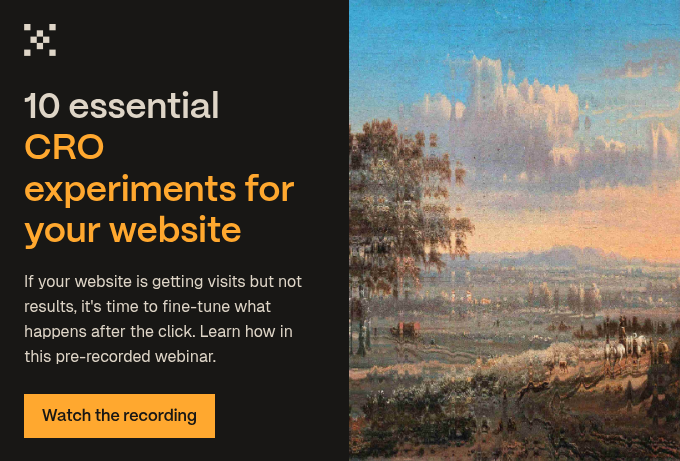Websites, like software products and video games, require a lot of testing. Errors, bugs and broken bits are guaranteed to send your potential customers running. So, today we're looking at how to prevent these issues when you launch a new website.
Watch the webinar
This article is based on a webinar we ran with QA expert, Brian Borg, founder and CEO of OnPath Testing. OnPath Testing are clients of ours as well as partners who help us run QA tests when we launch new websites. Brian is a software testing expert and good egg.
You can watch the original recording here:
What is QA?
QA testing verifies the functionality of a website (or any other software).
For websites, QA testers focus on functionality first, but also on the usability of the design, performance, security and compliance.
How to decide what to test
Testing takes a very considerate, methodical understanding of your website and your users. You have to take a step back and think about it from 10,000 feet perspective.
Ask yourself questions from all sorts of angles. Who's potentially coming to our website? Where are they coming from? What geography? What devices could they be looking at this on? What browsers? What operating systems? What does your website do when someone interacts with it? What if they fill in a form? Do you expect an email in your inbox? Do you expect a thank you message on the page?
Make a test plan
To run these tests, build a test plan with granular test cases, which is essentially a glorified checklist. It keeps you honest, ensuring you won't miss anything important. Ideally this will live in a software development lifecycle (SDLC) tool. But, you could track tests on something like Excel:
.jpg?width=1223&name=Untitled%20(93).jpg) In the above example you see we're looking at domains and functionality. The test cases along the left side, then browsers, operating systems and devices across top. This way of tracking tests means you can re-check fixes (regression testing) and report on testing metrics to key stakeholders.
In the above example you see we're looking at domains and functionality. The test cases along the left side, then browsers, operating systems and devices across top. This way of tracking tests means you can re-check fixes (regression testing) and report on testing metrics to key stakeholders.
The whole point is that the communication is clear and unambiguous. That way, fixes can be effective.
QA testing tools
Try out some of these tools for tracking and managing tests (we use Notion at Articulate, but your mileage may vary).
All credit to Brian for the above half of this blog. Now, some insights from Articulate's experience with building websites for clients.
8 common things you need to test on your website
1. Lorem ipsum
Writers and designers typically use 'Lorem ipsum' placeholder copy when they build out a website. Then, they forget to replace it. Run a thorough search to check for any lingering bits of lorem ipsum.
2. Missing pages
.jpg?width=791&name=Untitled%20(94).jpg) Hat tip to GitHub for the image.
Hat tip to GitHub for the image.
If you don't do the redirection from your old site to a new site properly by mapping page URLs then you get broken links and missing pages. URL redirection is a really important part of launching a new website for us. We've seen multiple cases of broken links in menus. Very often, the menu link is connected to a dev test page because of how it's been hard coded.
3. SSL errors
Google will penalise a site that has SSL errors. It's likely you won't notice this unless you're testing for it.
One of the problems with HubSpot sites is, in most cases, you can't host a HubSpot website on a native apex domain. Meaning, you can't have HTTPS code on articulatemarketing.com; it has to be www.articulatemarketing.com. In this case, you have to do a redirect from the apex domain to the www subdomain. If you don't have that redirection set up correctly, it won't be encrypted and it will trigger an SSL error.
4. Fat images
Your designer uploads a 16 megabyte graphic file. You could put that on a billboard. It has no place on your website. Instead, try to ensure your images are less than 300 kilobytes and stick to JPEGs or, even better, SVGs.
If you're on HubSpot you can use our app, Fizz+Ginger, to compress images.
5. Hidden from Google
Not publishing your site to Google is surprisingly common. It's very rare that we take over a client's website and they've already got a Google Search Console listing. If that just made your ears burn, then go here to learn about site maps.
In addition, sometimes we take over sites that have robots.txt that are blocking important pages from search engines. You might want to remove visibility on certain pages. However, if it's misconfigured, then you're hiding pages you do want people to be able to find on Google.
Top tip: If you're developing a WordPress site, watch out that you don't keep 'Discourage search engines from indexing this site' checked after you launch.
6. Browser compatibility
This used to be a bigger issue than it is today. Internet Explorer is often the culprit for not being compatible with industry standards. As a rule of thumb, if you are running comfortably on a modern version of Chrome or Safari, you're probably fine on other browsers, but it's still worth testing. Don't try to accommodate for very outdated browsers. It's not worth the effort.
7. Mobile responsiveness
About a third of our traffic comes from mobile. More than half of internet traffic on the web is mobile. Google does mobile-first indexing. Mobile is the future, in short.
Start by running Google's mobile-friendly test, but don't stop there. Check a range of devices and screen sizes for things like drop-down menus and pop-ups.
Top tip: AMP (Accelerated Mobile Pages) is a way to make your pages lightning fast on mobile, but you lose a lot of control over visibility, formatting, design and layout. However, it's probably a good idea to turn it on if you're experiencing a dip in traffic due to Google's recent algorithm updates.
8. Forms that don't go anywhere
Check that all the forms go to somebody, especially contact page forms. HubSpot's CRM software will log form fills, but it's up to you to set up a notification system so people in your business know that someone is trying to get in touch.
A final note
We're a data-driven, detail-oriented marketing agency, so we rather like the rigorous principles of QA testing.
Talk to OnPath Testing for testing services or speak to one of our consultants if you need a new website.
We'll leave you with this thought:
'Testing is an infinite process of comparing the invisible to the ambiguous in order to avoid the unthinkable happening to the anonymous.'
— James Bach





.jpg?width=400&height=250&name=national-historical-museum-of-sweden-nhm-P15K6_S-YWs-unsplash%201%20(1).jpg)

-1.jpg?width=400&height=250&name=museum-of-new-zealand-te-papa-tongarewa-e-3PPyd1U2g-unsplash%20(1)-1.jpg)